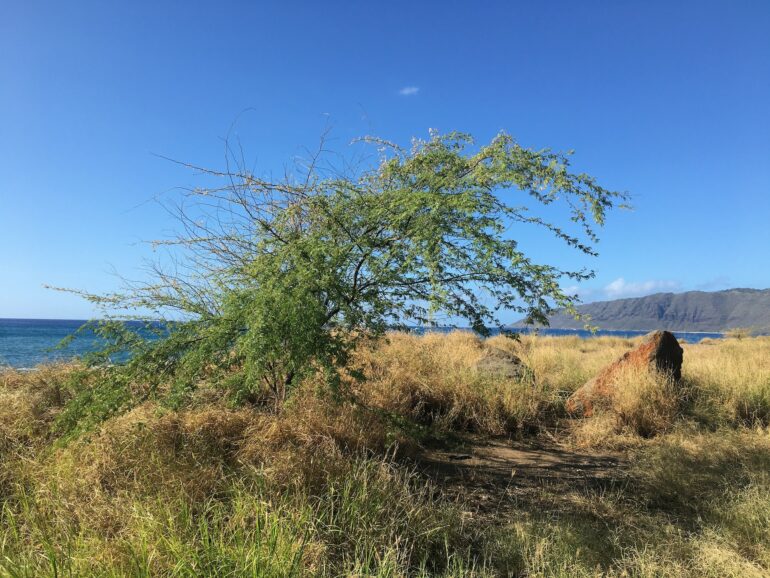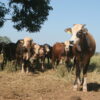The islands of Hawaii are world renowned for their generally pleasant and tranquil weather. However, the Aug. 8, 2023, wildfire tragedy on Maui was a stark reminder that Hawaii also can experience drought and hot, dry, windy weather, providing the conditions for destructive fires.
Hawaii has seen a generally rising trend in the amount of land that burns each year as the local climate warms. Climate change was one of several contributors to Maui’s wildfire catastrophe, and rising temperatures and associated rainfall changes are expected to increase the islands’ fire risk. These changing weather patterns will also affect Hawaii’s ecosystems and freshwater resources.
I am a meteorologist at the University of Hawaii, and I have worked with colleagues to develop sophisticated computer climate simulations that project local rainfall changes over the 21st century.
Our results suggest that as the planet warms, Hawaii’s dry regions will get drier, heightening the fire risk. At the same time, its wet areas will become wetter.
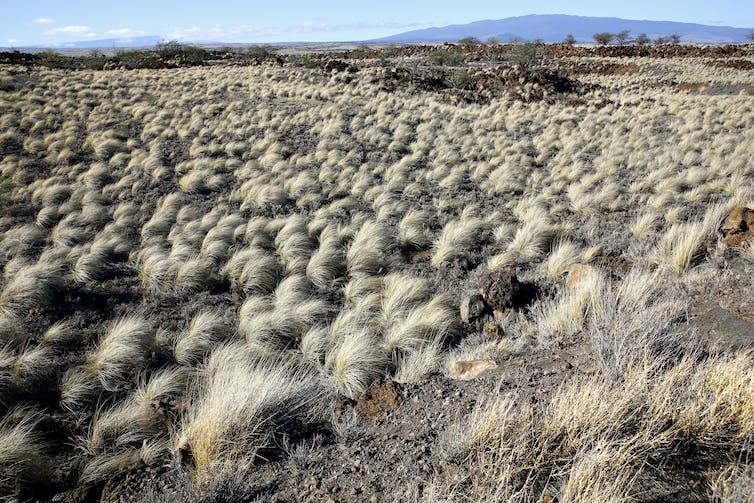
In dry areas, fields of dry grasses, like these near Waimea on the Big Island of Hawaii, can spread a wildfire quickly on a windy day.
AP Photo/Caleb Jones
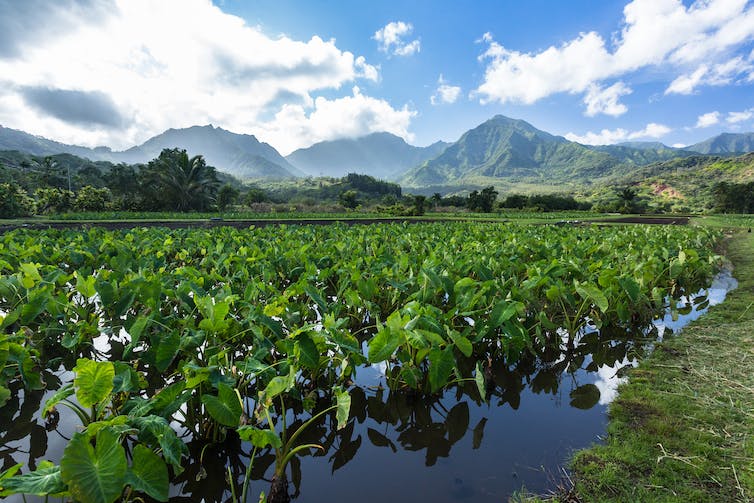
Runoff from frequent rainfall in the mountains keeps taro fields wet in Kauai, but flooding from heavy rain can wash in mud, harming the culturally important crop.
on G. Fuller/VW Pics/Universal Images Group via Getty Images
The drier parts of the state in particular have reason to be concerned about the future of fresh water available for residential, commercial and agricultural uses. In addition, changes in rainfall are expected to affect the distribution of plants in Hawaii, harming some unique native species such as silversword and increasing some invasive grass species that enhance fire danger.
Average rainfall drops sharply in the rain shadow
While Hawaii is home to some of the wettest spots on earth, it also has regions that receive little rain.
The very steep mountains on each of the main Hawaiian islands block the prevailing northeast trade winds. This results in abundant rain on the slopes facing the windward direction and dry “rain shadows” in the leeward areas. Maui’s west coast tourist communities, including Lahaina, are in one of those rain shadows.
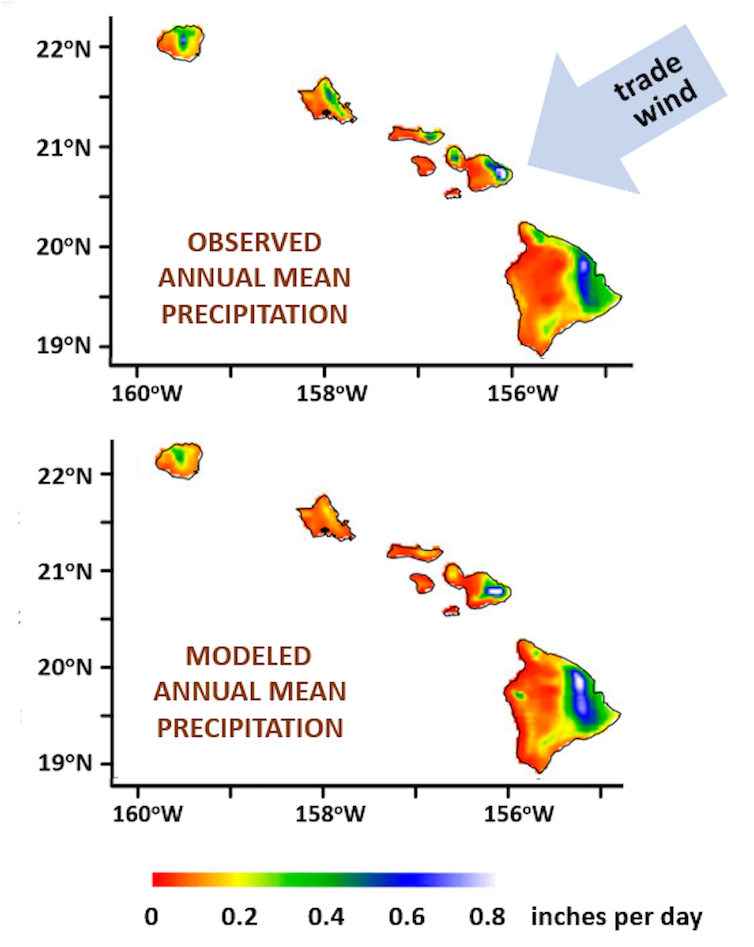
The top map shows the long-term average rainfall rate observed in Hawaii. The bottom map displays the result of the computer simulation, showing how closely the rain shadows are reproduced.
Adapted from Zhang et al., Journal of Climate, American Meteorological Society
Hawaii is remarkable for its exceptionally strong gradations in the average rainfall rates over very short distances. The summit of Mt. Waialeale in central Kauai, known as one of the rainiest places on Earth, receives an average of about 450 inches of rain per year. The town of Kehaka, 15 miles to the…
